Developing Managers Task 1: Communication Evaluation in Organizations
VerifiedAdded on 2023/04/22
|12
|1125
|394
Report
AI Summary
This report provides a detailed analysis of the communication process within an organization, emphasizing its significance in achieving business goals. It explores the key elements of effective communication, including the sender, encoding, message channel, decoding, and receiver. The report then delves into organizational culture, differentiating between clan, adhocracy, hierarchy, and market cultures, and illustrating how the selected organization, PPHE, utilizes a market culture to provide personalized services. Furthermore, the report examines various methods of motivation, such as rewards, recognition, and employee involvement in decision-making, which are crucial for enhancing employee performance and achieving organizational targets. Finally, it discusses the importance of managerial decisions, resource allocation, and the role of managers in ensuring effective communication and achieving desired goals. The report concludes by highlighting the significance of effective communication and motivation in driving business success and profitability.
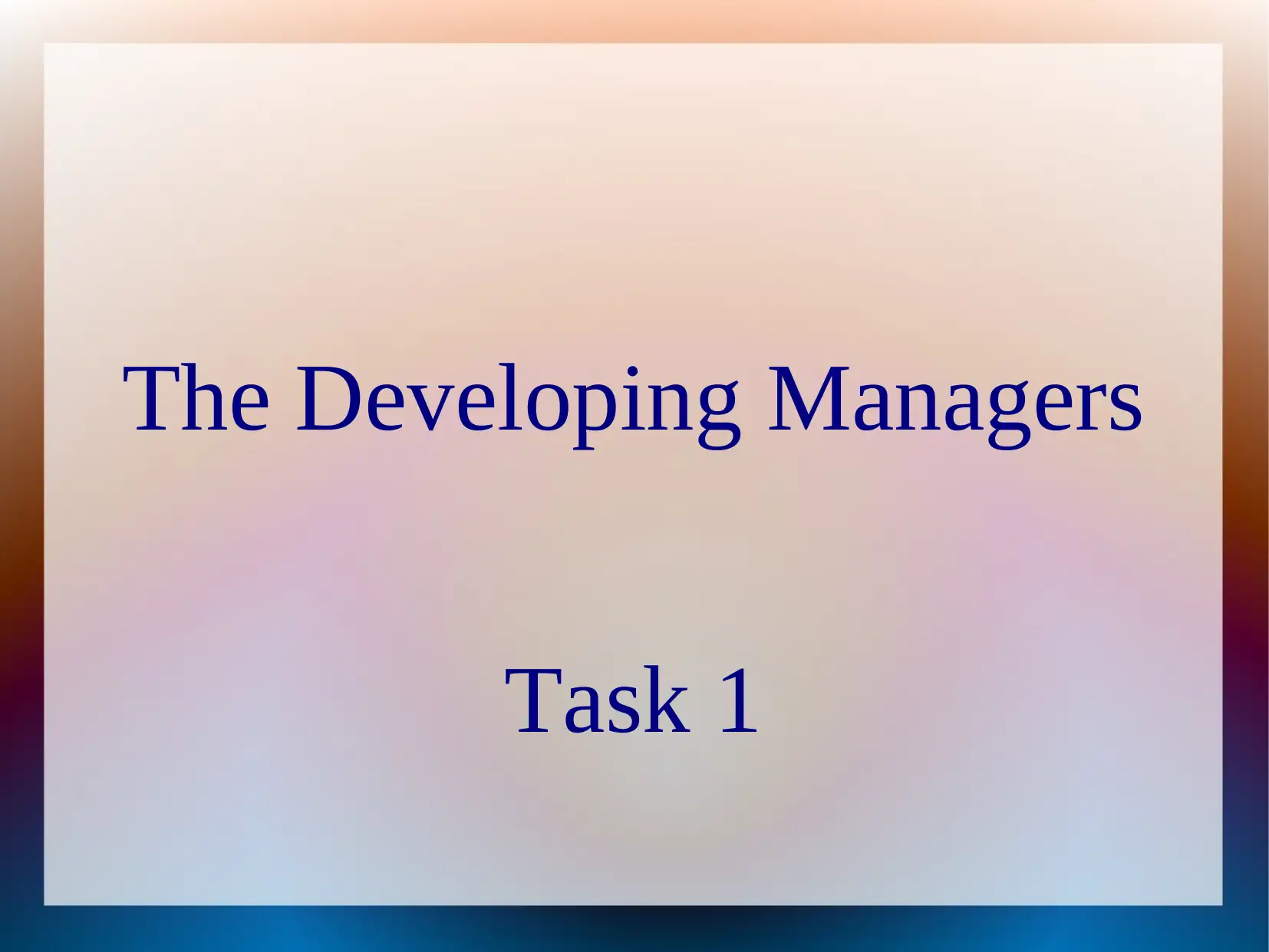
The Developing Managers
Task 1
Task 1
Paraphrase This Document
Need a fresh take? Get an instant paraphrase of this document with our AI Paraphraser
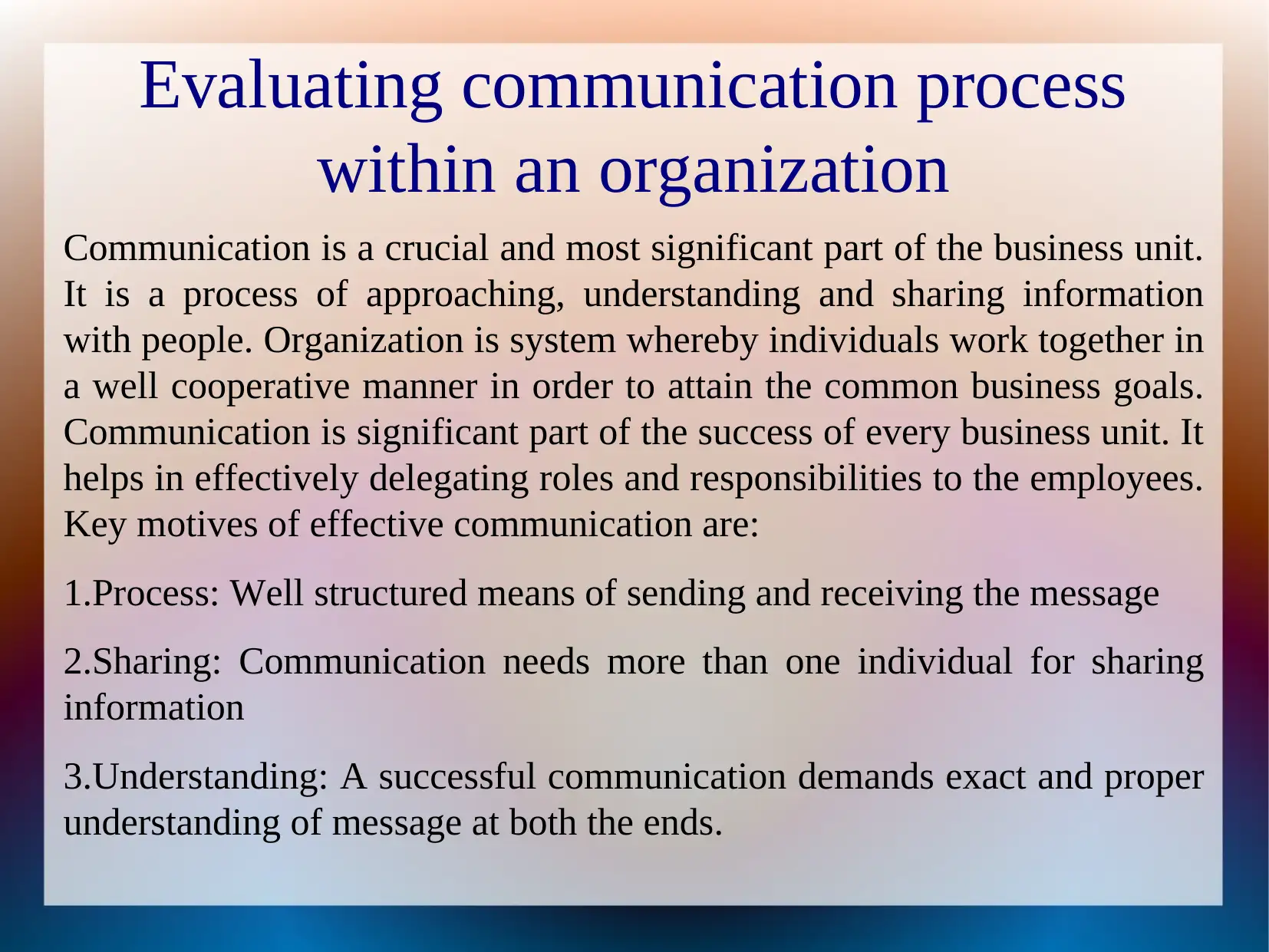
Evaluating communication process
within an organization
Communication is a crucial and most significant part of the business unit.
It is a process of approaching, understanding and sharing information
with people. Organization is system whereby individuals work together in
a well cooperative manner in order to attain the common business goals.
Communication is significant part of the success of every business unit. It
helps in effectively delegating roles and responsibilities to the employees.
Key motives of effective communication are:
1.Process: Well structured means of sending and receiving the message
2.Sharing: Communication needs more than one individual for sharing
information
3.Understanding: A successful communication demands exact and proper
understanding of message at both the ends.
within an organization
Communication is a crucial and most significant part of the business unit.
It is a process of approaching, understanding and sharing information
with people. Organization is system whereby individuals work together in
a well cooperative manner in order to attain the common business goals.
Communication is significant part of the success of every business unit. It
helps in effectively delegating roles and responsibilities to the employees.
Key motives of effective communication are:
1.Process: Well structured means of sending and receiving the message
2.Sharing: Communication needs more than one individual for sharing
information
3.Understanding: A successful communication demands exact and proper
understanding of message at both the ends.
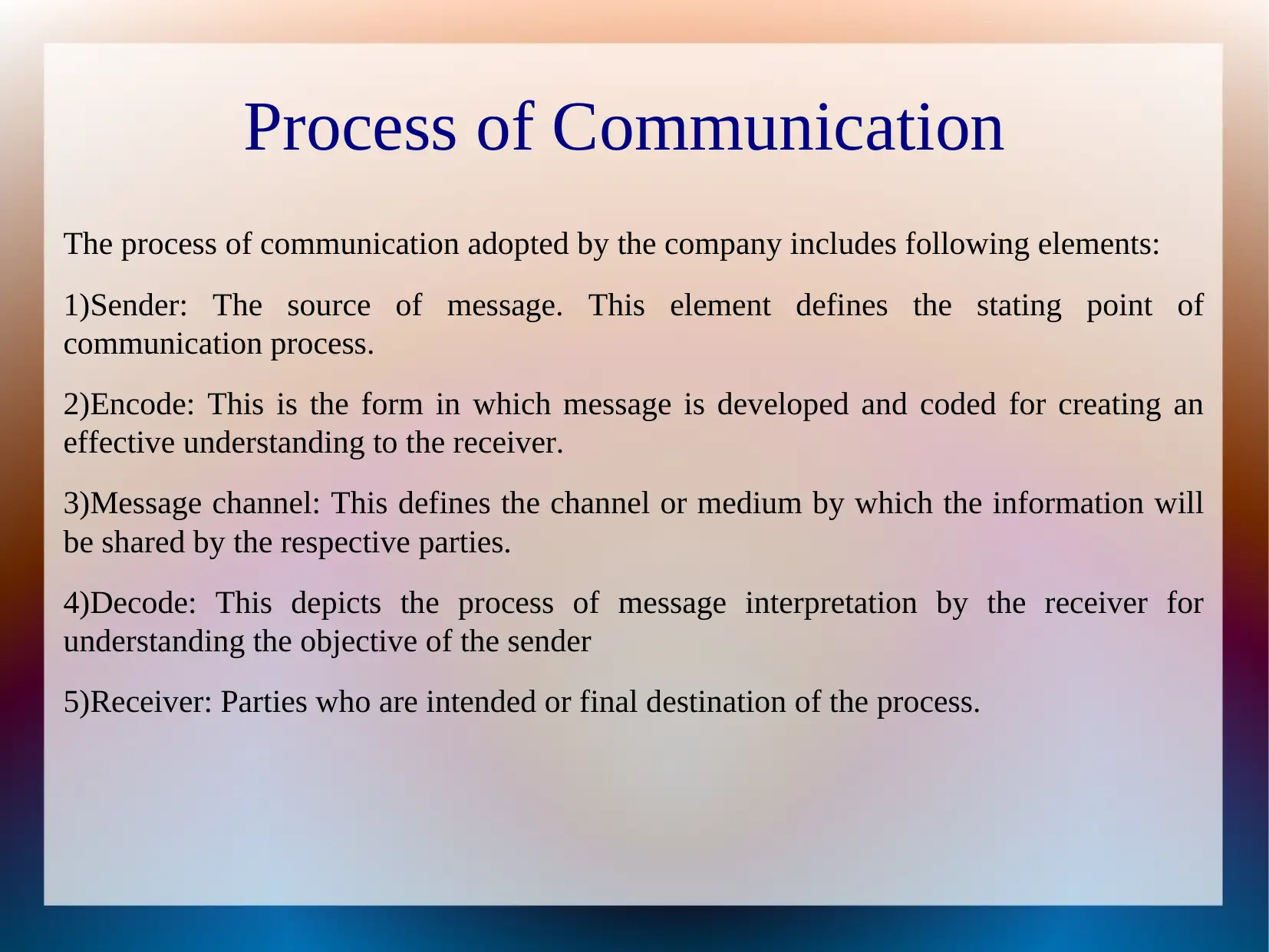
Process of Communication
The process of communication adopted by the company includes following elements:
1)Sender: The source of message. This element defines the stating point of
communication process.
2)Encode: This is the form in which message is developed and coded for creating an
effective understanding to the receiver.
3)Message channel: This defines the channel or medium by which the information will
be shared by the respective parties.
4)Decode: This depicts the process of message interpretation by the receiver for
understanding the objective of the sender
5)Receiver: Parties who are intended or final destination of the process.
The process of communication adopted by the company includes following elements:
1)Sender: The source of message. This element defines the stating point of
communication process.
2)Encode: This is the form in which message is developed and coded for creating an
effective understanding to the receiver.
3)Message channel: This defines the channel or medium by which the information will
be shared by the respective parties.
4)Decode: This depicts the process of message interpretation by the receiver for
understanding the objective of the sender
5)Receiver: Parties who are intended or final destination of the process.
⊘ This is a preview!⊘
Do you want full access?
Subscribe today to unlock all pages.

Trusted by 1+ million students worldwide
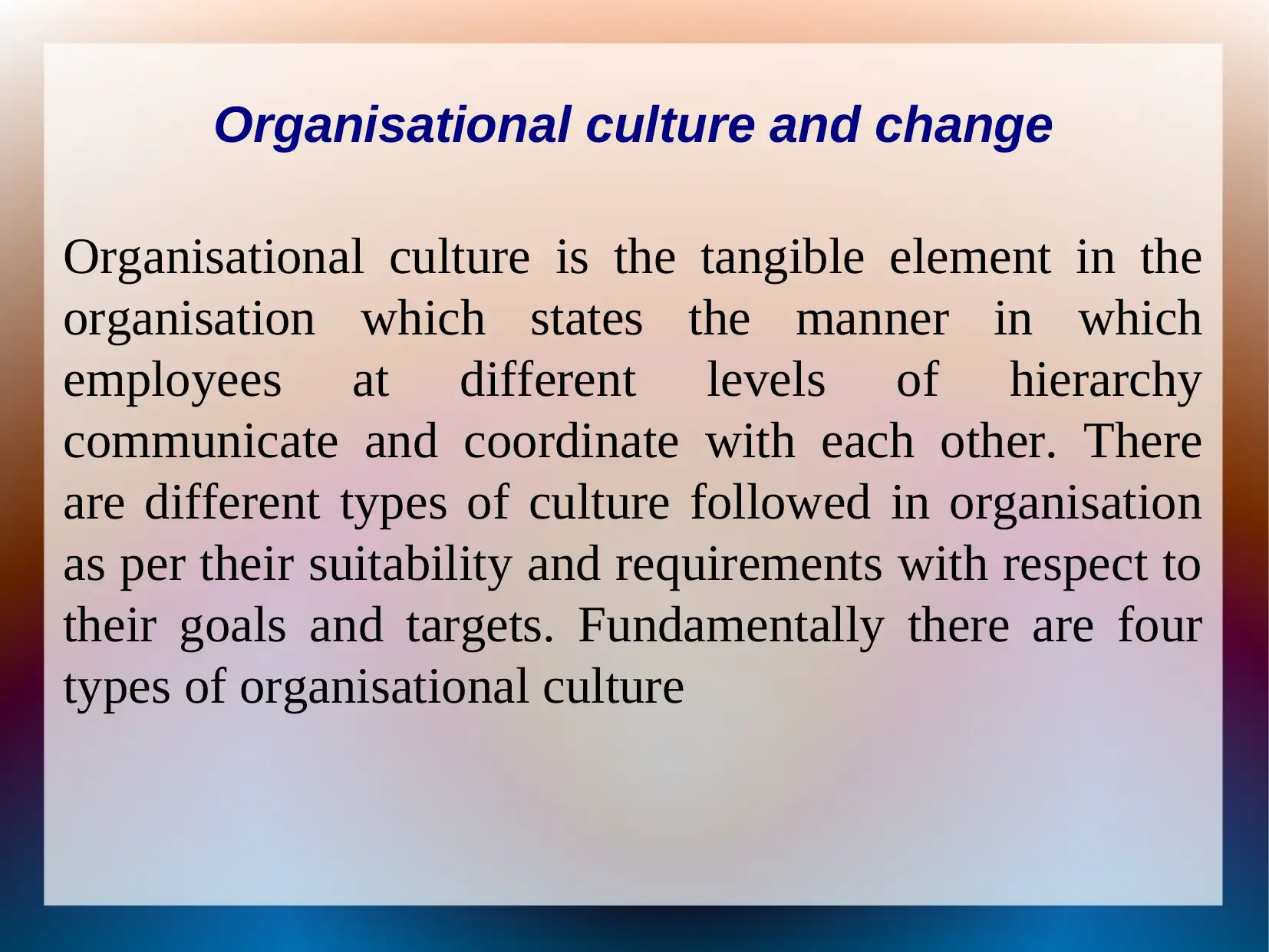
Organisational culture and change
Organisational culture is the tangible element in the
organisation which states the manner in which
employees at different levels of hierarchy
communicate and coordinate with each other. There
are different types of culture followed in organisation
as per their suitability and requirements with respect to
their goals and targets. Fundamentally there are four
types of organisational culture
Organisational culture is the tangible element in the
organisation which states the manner in which
employees at different levels of hierarchy
communicate and coordinate with each other. There
are different types of culture followed in organisation
as per their suitability and requirements with respect to
their goals and targets. Fundamentally there are four
types of organisational culture
Paraphrase This Document
Need a fresh take? Get an instant paraphrase of this document with our AI Paraphraser
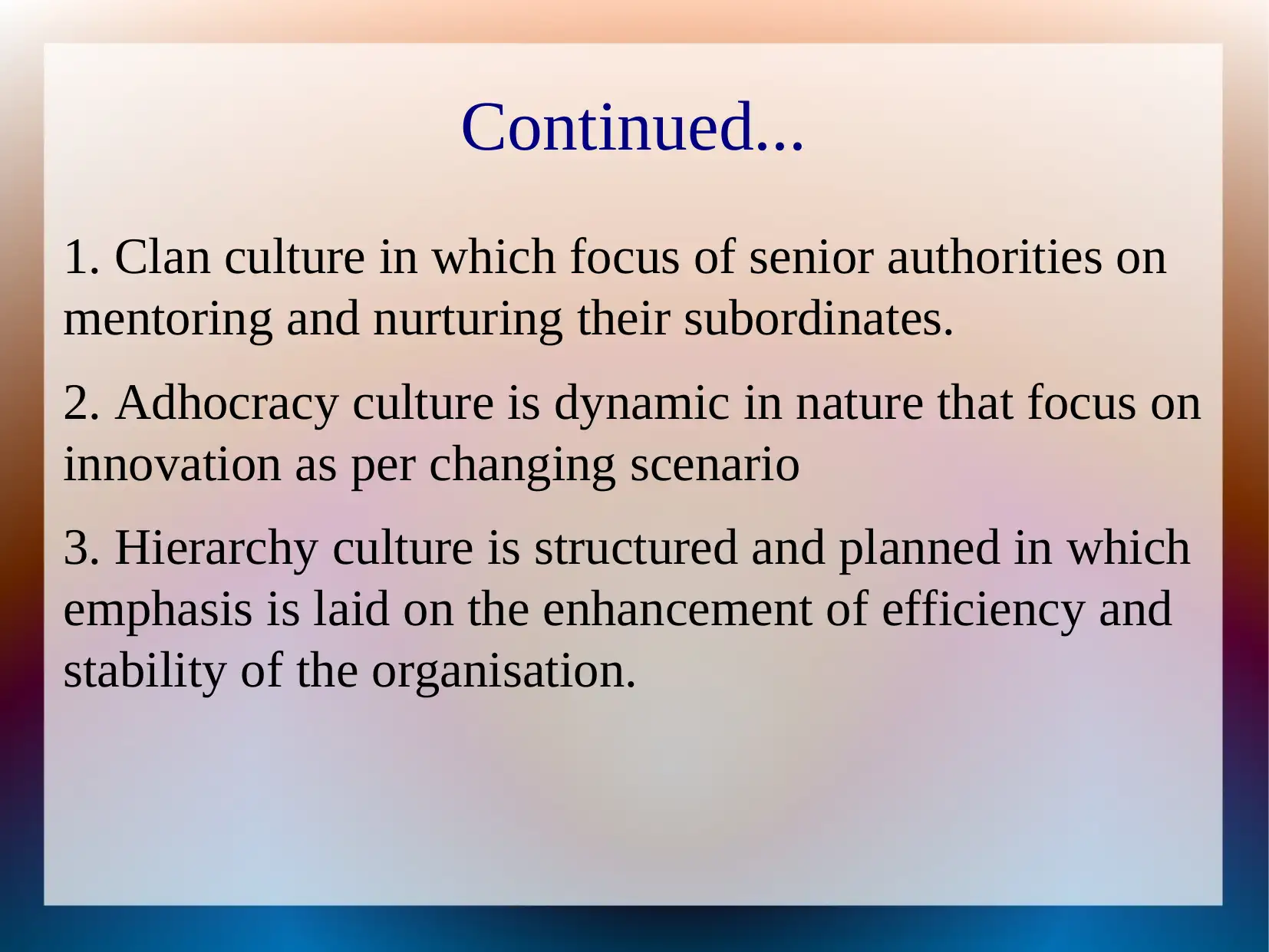
Continued...
1. Clan culture in which focus of senior authorities on
mentoring and nurturing their subordinates.
2. Adhocracy culture is dynamic in nature that focus on
innovation as per changing scenario
3. Hierarchy culture is structured and planned in which
emphasis is laid on the enhancement of efficiency and
stability of the organisation.
1. Clan culture in which focus of senior authorities on
mentoring and nurturing their subordinates.
2. Adhocracy culture is dynamic in nature that focus on
innovation as per changing scenario
3. Hierarchy culture is structured and planned in which
emphasis is laid on the enhancement of efficiency and
stability of the organisation.
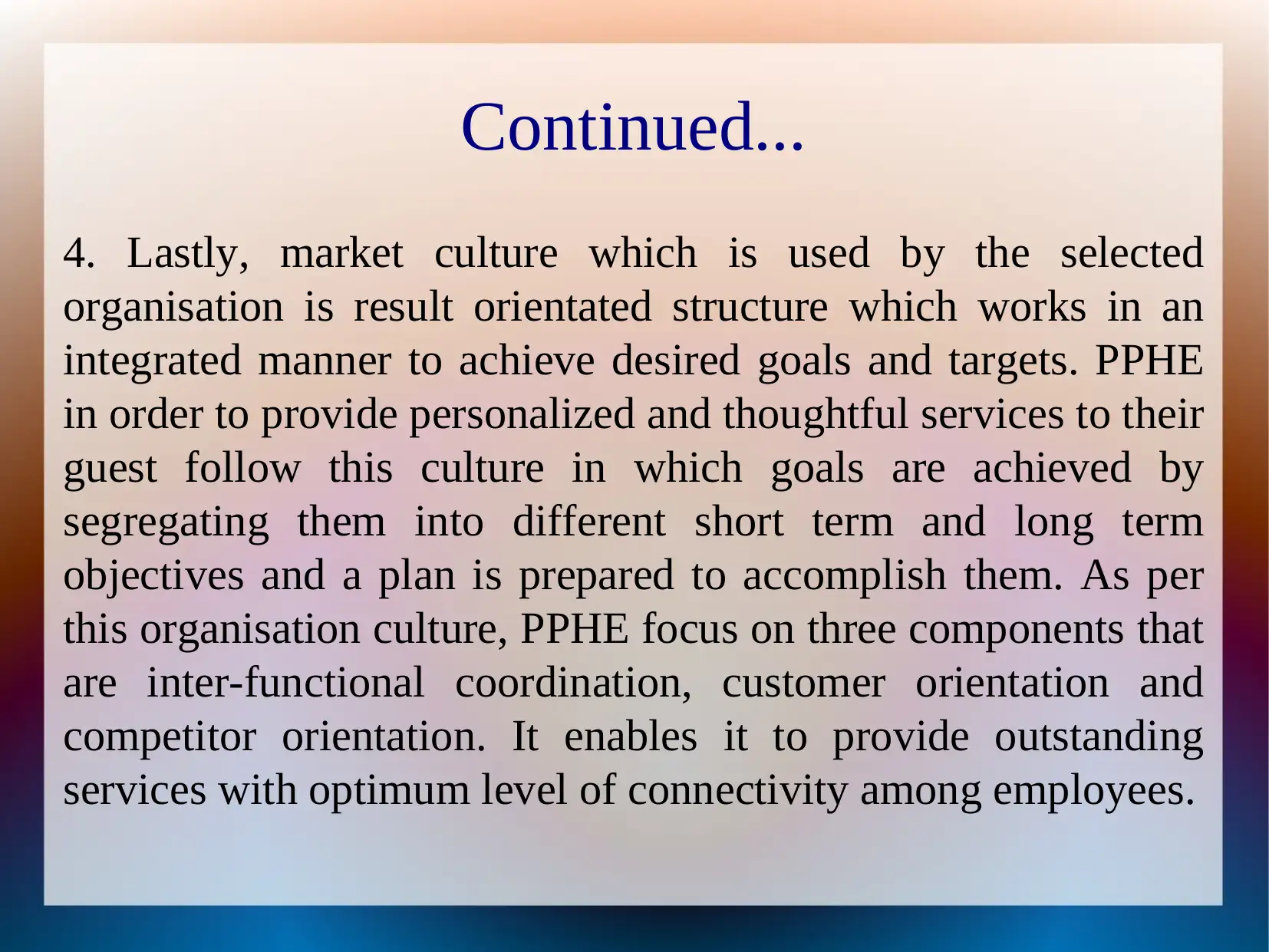
Continued...
4. Lastly, market culture which is used by the selected
organisation is result orientated structure which works in an
integrated manner to achieve desired goals and targets. PPHE
in order to provide personalized and thoughtful services to their
guest follow this culture in which goals are achieved by
segregating them into different short term and long term
objectives and a plan is prepared to accomplish them. As per
this organisation culture, PPHE focus on three components that
are inter-functional coordination, customer orientation and
competitor orientation. It enables it to provide outstanding
services with optimum level of connectivity among employees.
4. Lastly, market culture which is used by the selected
organisation is result orientated structure which works in an
integrated manner to achieve desired goals and targets. PPHE
in order to provide personalized and thoughtful services to their
guest follow this culture in which goals are achieved by
segregating them into different short term and long term
objectives and a plan is prepared to accomplish them. As per
this organisation culture, PPHE focus on three components that
are inter-functional coordination, customer orientation and
competitor orientation. It enables it to provide outstanding
services with optimum level of connectivity among employees.
⊘ This is a preview!⊘
Do you want full access?
Subscribe today to unlock all pages.

Trusted by 1+ million students worldwide
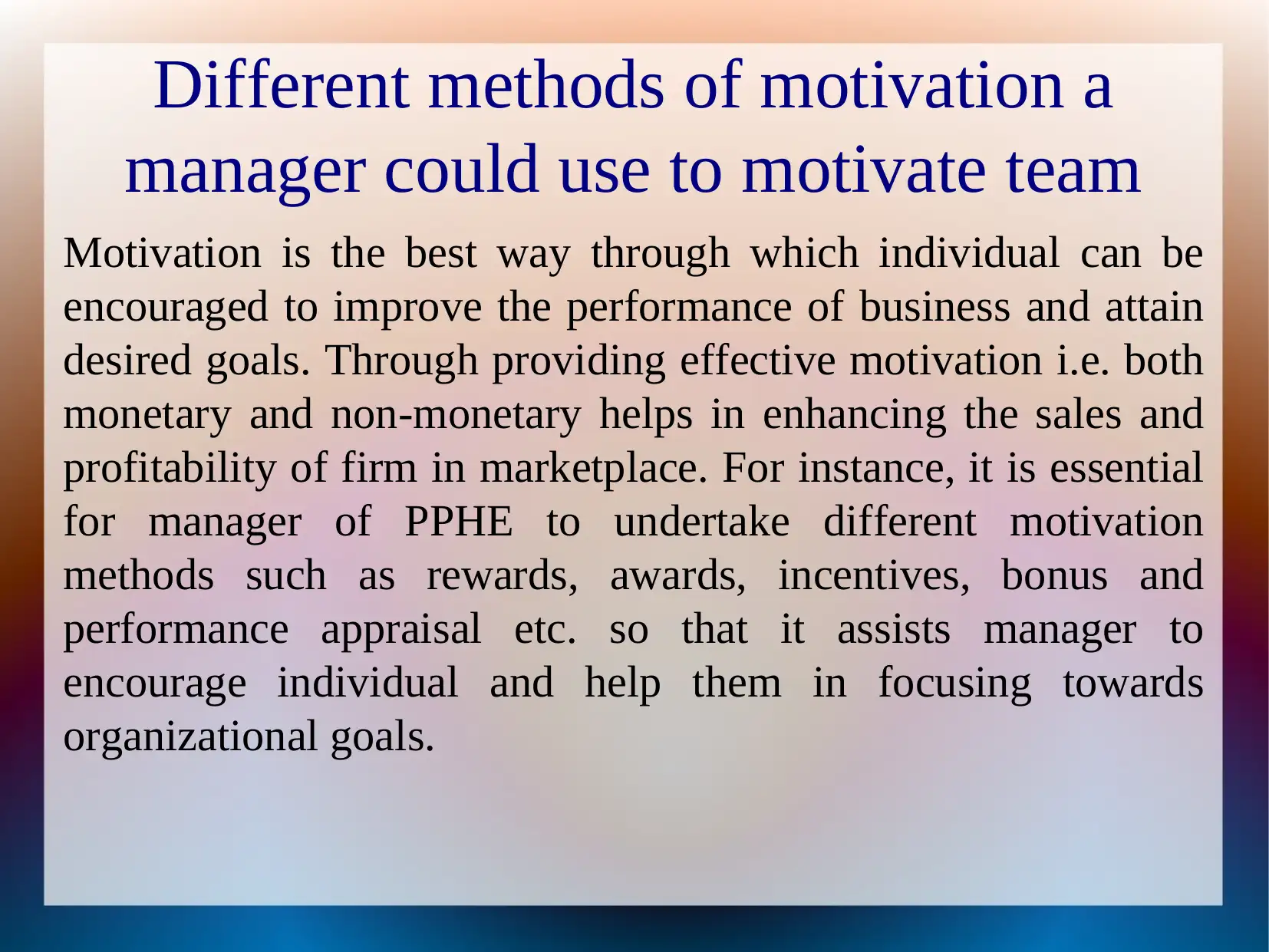
Different methods of motivation a
manager could use to motivate team
Motivation is the best way through which individual can be
encouraged to improve the performance of business and attain
desired goals. Through providing effective motivation i.e. both
monetary and non-monetary helps in enhancing the sales and
profitability of firm in marketplace. For instance, it is essential
for manager of PPHE to undertake different motivation
methods such as rewards, awards, incentives, bonus and
performance appraisal etc. so that it assists manager to
encourage individual and help them in focusing towards
organizational goals.
manager could use to motivate team
Motivation is the best way through which individual can be
encouraged to improve the performance of business and attain
desired goals. Through providing effective motivation i.e. both
monetary and non-monetary helps in enhancing the sales and
profitability of firm in marketplace. For instance, it is essential
for manager of PPHE to undertake different motivation
methods such as rewards, awards, incentives, bonus and
performance appraisal etc. so that it assists manager to
encourage individual and help them in focusing towards
organizational goals.
Paraphrase This Document
Need a fresh take? Get an instant paraphrase of this document with our AI Paraphraser
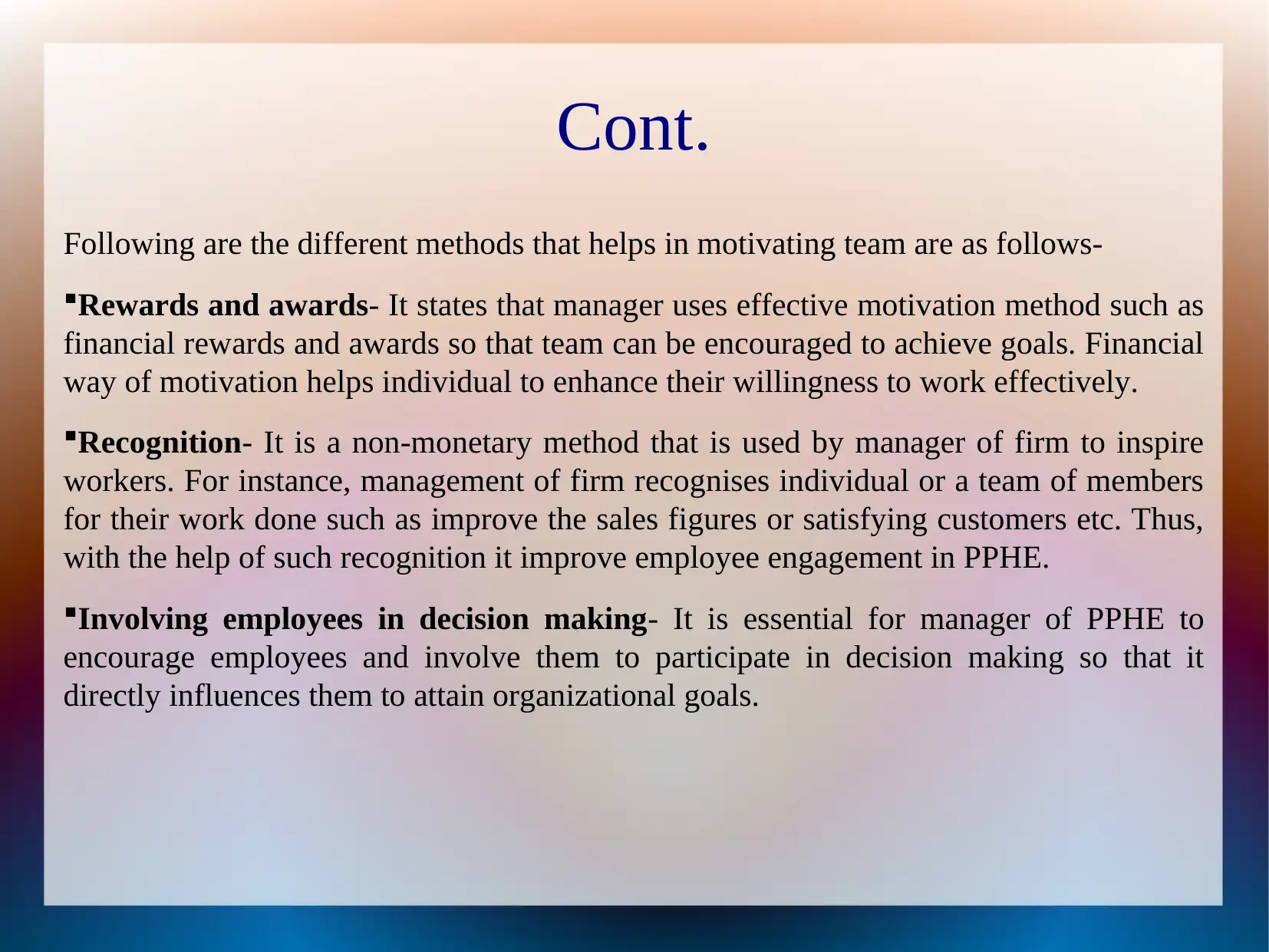
Cont.
Following are the different methods that helps in motivating team are as follows-
Rewards and awards- It states that manager uses effective motivation method such as
financial rewards and awards so that team can be encouraged to achieve goals. Financial
way of motivation helps individual to enhance their willingness to work effectively.
Recognition- It is a non-monetary method that is used by manager of firm to inspire
workers. For instance, management of firm recognises individual or a team of members
for their work done such as improve the sales figures or satisfying customers etc. Thus,
with the help of such recognition it improve employee engagement in PPHE.
Involving employees in decision making- It is essential for manager of PPHE to
encourage employees and involve them to participate in decision making so that it
directly influences them to attain organizational goals.
Following are the different methods that helps in motivating team are as follows-
Rewards and awards- It states that manager uses effective motivation method such as
financial rewards and awards so that team can be encouraged to achieve goals. Financial
way of motivation helps individual to enhance their willingness to work effectively.
Recognition- It is a non-monetary method that is used by manager of firm to inspire
workers. For instance, management of firm recognises individual or a team of members
for their work done such as improve the sales figures or satisfying customers etc. Thus,
with the help of such recognition it improve employee engagement in PPHE.
Involving employees in decision making- It is essential for manager of PPHE to
encourage employees and involve them to participate in decision making so that it
directly influences them to attain organizational goals.
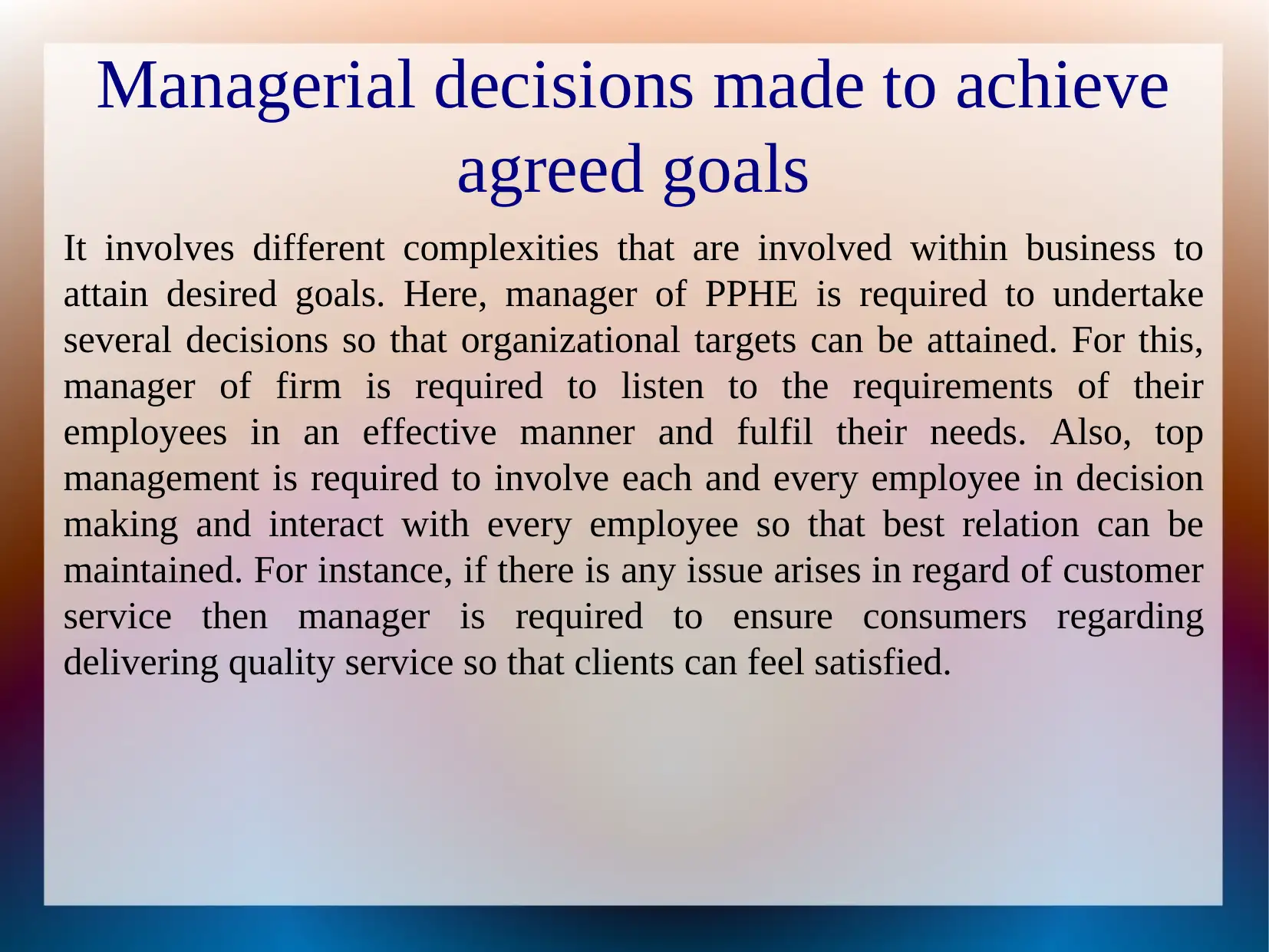
Managerial decisions made to achieve
agreed goals
It involves different complexities that are involved within business to
attain desired goals. Here, manager of PPHE is required to undertake
several decisions so that organizational targets can be attained. For this,
manager of firm is required to listen to the requirements of their
employees in an effective manner and fulfil their needs. Also, top
management is required to involve each and every employee in decision
making and interact with every employee so that best relation can be
maintained. For instance, if there is any issue arises in regard of customer
service then manager is required to ensure consumers regarding
delivering quality service so that clients can feel satisfied.
agreed goals
It involves different complexities that are involved within business to
attain desired goals. Here, manager of PPHE is required to undertake
several decisions so that organizational targets can be attained. For this,
manager of firm is required to listen to the requirements of their
employees in an effective manner and fulfil their needs. Also, top
management is required to involve each and every employee in decision
making and interact with every employee so that best relation can be
maintained. For instance, if there is any issue arises in regard of customer
service then manager is required to ensure consumers regarding
delivering quality service so that clients can feel satisfied.
⊘ This is a preview!⊘
Do you want full access?
Subscribe today to unlock all pages.

Trusted by 1+ million students worldwide
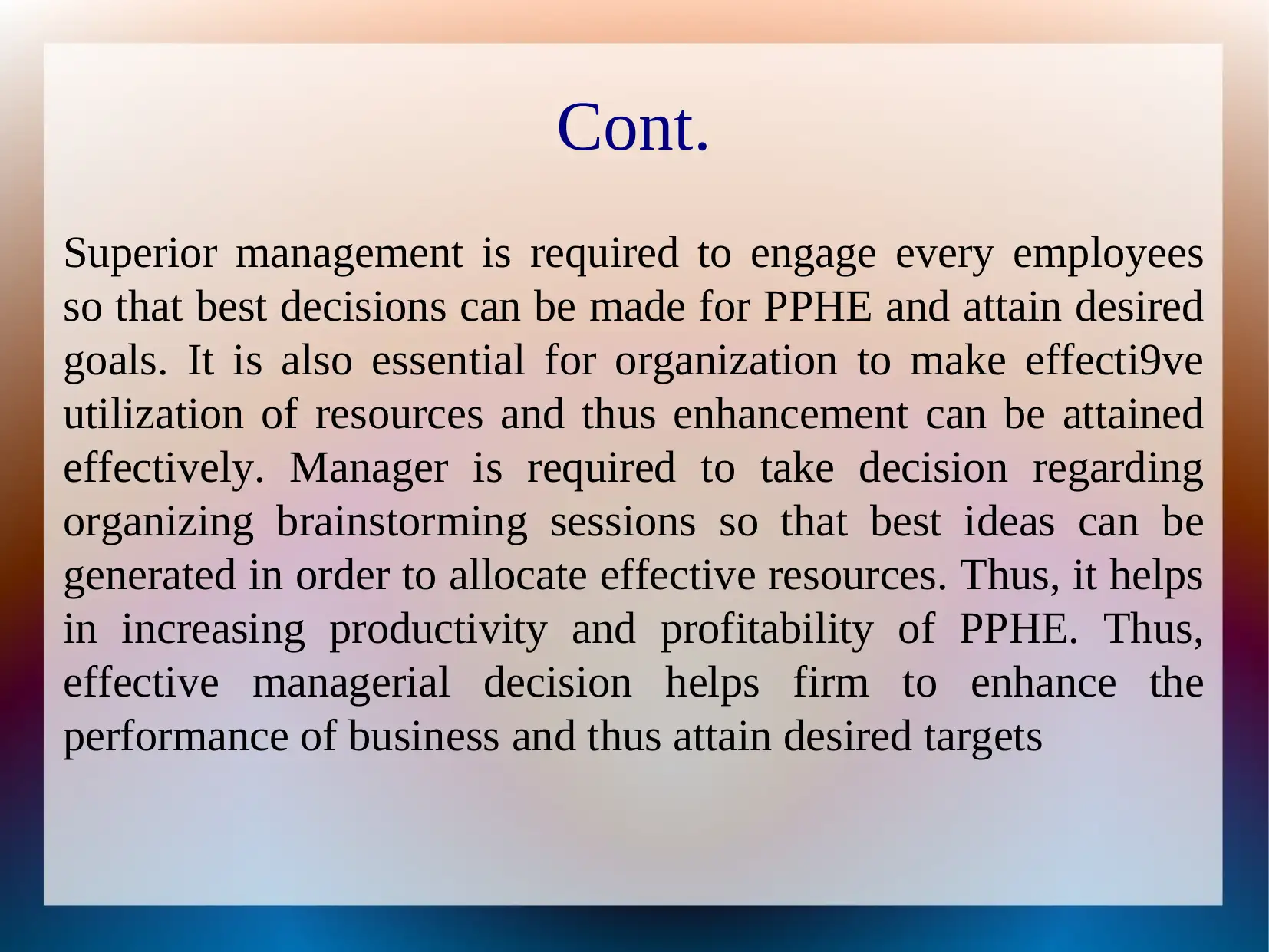
Cont.
Superior management is required to engage every employees
so that best decisions can be made for PPHE and attain desired
goals. It is also essential for organization to make effecti9ve
utilization of resources and thus enhancement can be attained
effectively. Manager is required to take decision regarding
organizing brainstorming sessions so that best ideas can be
generated in order to allocate effective resources. Thus, it helps
in increasing productivity and profitability of PPHE. Thus,
effective managerial decision helps firm to enhance the
performance of business and thus attain desired targets
Superior management is required to engage every employees
so that best decisions can be made for PPHE and attain desired
goals. It is also essential for organization to make effecti9ve
utilization of resources and thus enhancement can be attained
effectively. Manager is required to take decision regarding
organizing brainstorming sessions so that best ideas can be
generated in order to allocate effective resources. Thus, it helps
in increasing productivity and profitability of PPHE. Thus,
effective managerial decision helps firm to enhance the
performance of business and thus attain desired targets
Paraphrase This Document
Need a fresh take? Get an instant paraphrase of this document with our AI Paraphraser
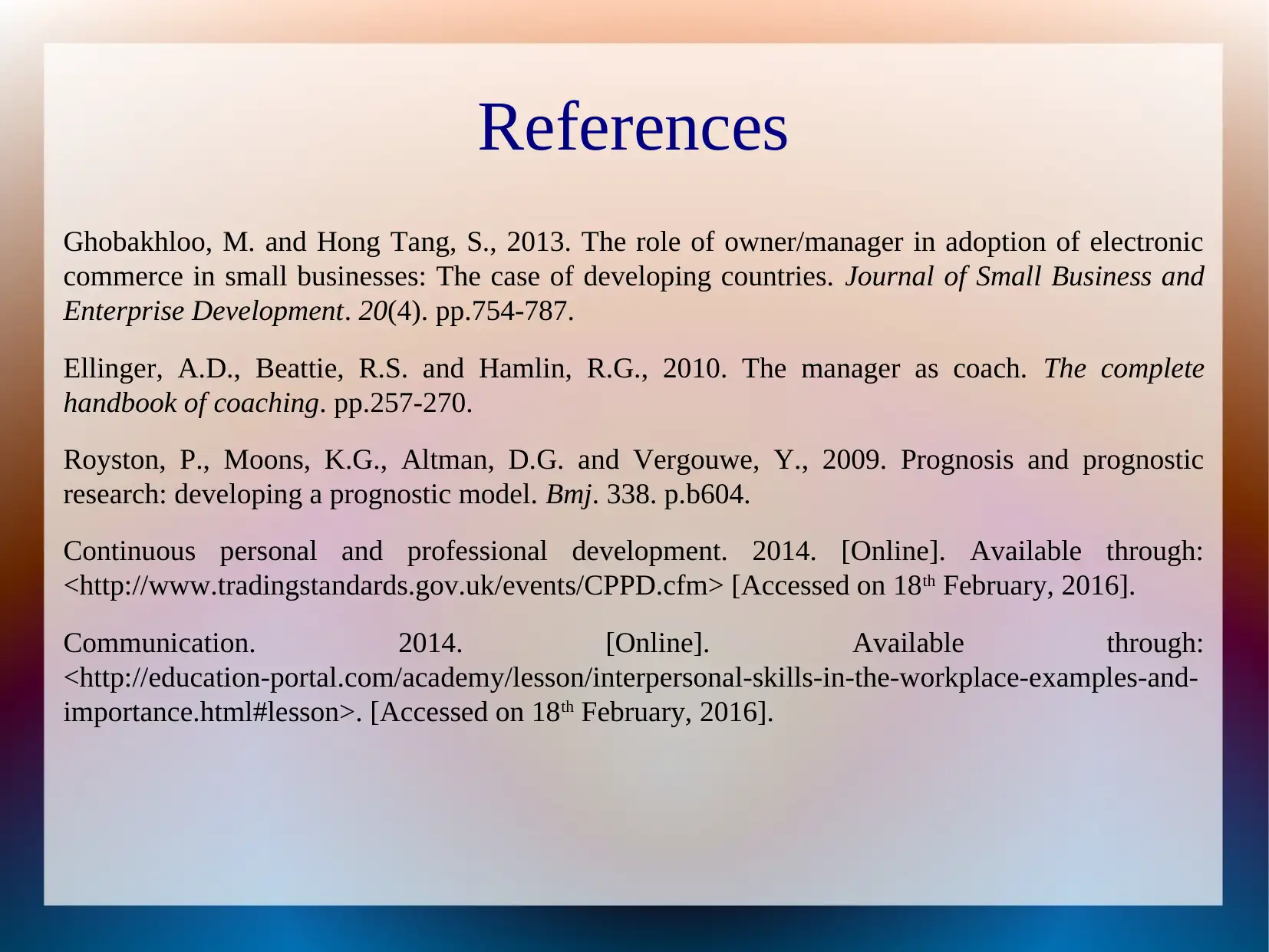
References
Ghobakhloo, M. and Hong Tang, S., 2013. The role of owner/manager in adoption of electronic
commerce in small businesses: The case of developing countries. Journal of Small Business and
Enterprise Development. 20(4). pp.754-787.
Ellinger, A.D., Beattie, R.S. and Hamlin, R.G., 2010. The manager as coach. The complete
handbook of coaching. pp.257-270.
Royston, P., Moons, K.G., Altman, D.G. and Vergouwe, Y., 2009. Prognosis and prognostic
research: developing a prognostic model. Bmj. 338. p.b604.
Continuous personal and professional development. 2014. [Online]. Available through:
<http://www.tradingstandards.gov.uk/events/CPPD.cfm> [Accessed on 18th February, 2016].
Communication. 2014. [Online]. Available through:
<http://education-portal.com/academy/lesson/interpersonal-skills-in-the-workplace-examples-and-
importance.html#lesson>. [Accessed on 18th February, 2016].
Ghobakhloo, M. and Hong Tang, S., 2013. The role of owner/manager in adoption of electronic
commerce in small businesses: The case of developing countries. Journal of Small Business and
Enterprise Development. 20(4). pp.754-787.
Ellinger, A.D., Beattie, R.S. and Hamlin, R.G., 2010. The manager as coach. The complete
handbook of coaching. pp.257-270.
Royston, P., Moons, K.G., Altman, D.G. and Vergouwe, Y., 2009. Prognosis and prognostic
research: developing a prognostic model. Bmj. 338. p.b604.
Continuous personal and professional development. 2014. [Online]. Available through:
<http://www.tradingstandards.gov.uk/events/CPPD.cfm> [Accessed on 18th February, 2016].
Communication. 2014. [Online]. Available through:
<http://education-portal.com/academy/lesson/interpersonal-skills-in-the-workplace-examples-and-
importance.html#lesson>. [Accessed on 18th February, 2016].

Thank You!!
⊘ This is a preview!⊘
Do you want full access?
Subscribe today to unlock all pages.

Trusted by 1+ million students worldwide
1 out of 12
Related Documents
Your All-in-One AI-Powered Toolkit for Academic Success.
+13062052269
info@desklib.com
Available 24*7 on WhatsApp / Email
![[object Object]](/_next/static/media/star-bottom.7253800d.svg)
Unlock your academic potential
Copyright © 2020–2025 A2Z Services. All Rights Reserved. Developed and managed by ZUCOL.





